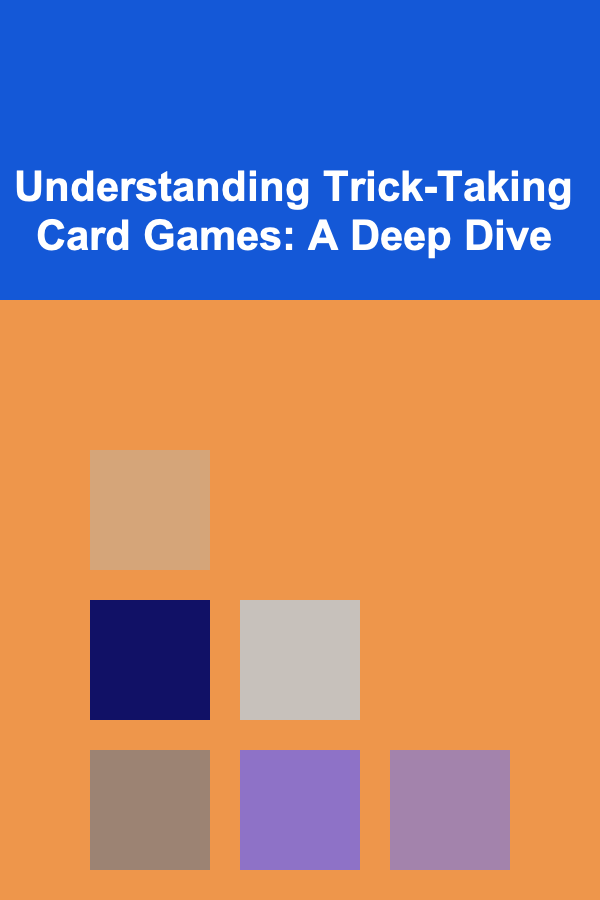
Cultivating Creativity in Daily Life: A Comprehensive Guide
ebook include PDF & Audio bundle (Micro Guide)
$12.99$6.99
Limited Time Offer! Order within the next:

Creativity, often perceived as an innate talent reserved for artists and innovators, is, in reality, a muscle that can be strengthened and honed through conscious effort and intentional practice. It's not just about painting masterpieces or writing bestsellers; creativity is the engine of innovation, problem-solving, and personal growth. It allows us to approach challenges with fresh perspectives, generate novel solutions, and find joy and fulfillment in unexpected places. This guide explores the multifaceted nature of creativity and provides practical strategies for cultivating it in your daily life, transforming mundane routines into opportunities for inspiration and innovation.
Understanding Creativity: Beyond the Myth
Before delving into practical techniques, it's crucial to dismantle some common misconceptions about creativity. It's not magic. It's not exclusive to a select few. It's not just about artistic expression. Creativity, at its core, is the ability to generate new and useful ideas. It involves:
- Divergent Thinking: Exploring multiple possibilities and generating a wide range of ideas, even seemingly unrelated ones. This is the brainstorming phase, where quantity trumps quality.
- Convergent Thinking: Evaluating and refining the generated ideas, selecting the most promising ones, and developing them into practical solutions. This is where critical thinking and analysis come into play.
- Imagination: The ability to form mental images and concepts of things that are not present or that do not yet exist. Imagination fuels the exploration of the unknown and the creation of the new.
- Problem Solving: Creativity is often sparked by a need to overcome a challenge or address a problem. It's about finding innovative solutions to existing issues.
- Originality: While it's rare to create something entirely from scratch, originality involves combining existing ideas in new and unique ways. It's about putting your own spin on things.
- Flexibility: The willingness to adapt and change your approach when faced with obstacles or new information. It's about being open to different perspectives and possibilities.
Understanding these elements allows us to approach creativity more systematically and consciously. It's not about waiting for inspiration to strike; it's about actively creating the conditions that foster creative thinking.
Creating a Creativity-Conducive Environment
Your surroundings significantly impact your ability to think creatively. A cluttered, stressful, or monotonous environment can stifle inspiration, while a stimulating, comfortable, and flexible space can encourage it. Here are some ways to create a more creativity-conducive environment:
Physical Space:
- Declutter and Organize: A clean and organized workspace reduces distractions and allows your mind to focus. Consider using a minimalist approach to avoid visual overload.
- Incorporate Natural Elements: Studies have shown that exposure to nature, even through plants or natural light, can boost creativity and reduce stress. Bring the outdoors in.
- Create a Dedicated Creative Space: Designate a specific area in your home or office solely for creative activities. This space should be free from distractions and filled with tools and resources that inspire you.
- Experiment with Colors: Different colors can evoke different emotions and inspire different types of thinking. Consider using blue for calmness and focus, yellow for optimism and energy, or green for nature and balance.
- Use Flexible and Adaptable Furniture: Choose furniture that can be easily rearranged to accommodate different activities and needs. This allows you to change your environment to suit your mood and spark new ideas.
- Add Inspiration Boards: Create a visual collage of images, quotes, and objects that inspire you. This can serve as a constant source of motivation and ideas.
Mental Space:
- Minimize Distractions: Turn off notifications, silence your phone, and create a designated "focus zone" where you can work without interruptions. Communicate your need for uninterrupted time to those around you.
- Embrace Boredom: In our hyper-connected world, boredom is often seen as something to be avoided. However, boredom can be a catalyst for creativity, as it forces the mind to wander and explore new possibilities. Allow yourself to be bored occasionally.
- Cultivate Mindfulness: Mindfulness practices, such as meditation and deep breathing, can help you quiet your mind, reduce stress, and become more aware of your thoughts and feelings. This can lead to greater clarity and creativity.
- Prioritize Rest and Relaxation: Creativity requires energy. Ensure you get enough sleep, eat a healthy diet, and engage in activities that help you relax and recharge.
- Challenge Negative Self-Talk: Negative thoughts and beliefs can stifle creativity. Identify and challenge these thoughts, replacing them with positive affirmations and self-compassion.
- Embrace Imperfection: The fear of failure can be a major obstacle to creativity. Remember that mistakes are a natural part of the creative process and that they can often lead to unexpected discoveries. Don't be afraid to experiment and take risks.
Practical Techniques for Stimulating Creativity
Creating the right environment is just the first step. You also need to actively engage in practices that stimulate your creative thinking. Here are some techniques you can incorporate into your daily routine:
Idea Generation Techniques:
- Brainstorming: Gather a group of people and generate as many ideas as possible, without judgment or criticism. Focus on quantity over quality and encourage wild and unconventional ideas.
- Mind Mapping: Start with a central idea and branch out with related concepts, keywords, and images. This visual technique can help you explore connections and generate new insights.
- SCAMPER: A checklist that prompts you to think about different ways to modify an existing product, service, or idea:
- Substitute: What can be replaced?
- Combine: What can be merged or integrated?
- Adapt: What can be modified or adjusted?
- Modify/Magnify/Minimize: What can be made bigger, smaller, or altered in some way?
- Put to other uses: How can it be used for something else?
- Eliminate: What can be removed or simplified?
- Reverse/Rearrange: What can be done in reverse or reordered?
- Random Word Association: Choose a random word and use it as a starting point for brainstorming ideas related to your topic. This can help you break free from conventional thinking.
- Reverse Brainstorming: Instead of trying to solve a problem, try to find ways to make it worse. This can help you identify the root causes of the problem and generate innovative solutions.
- The "Yes, And..." Method: In group brainstorming sessions, build on each other's ideas by adding to them instead of rejecting them. This fosters a more collaborative and creative environment.
Creative Exploration Techniques:
- Journaling: Write down your thoughts, feelings, and observations in a journal. This can help you process your experiences, identify patterns, and generate new ideas. Try freewriting, where you write continuously without stopping to edit or censor yourself.
- Sketching and Drawing: Even if you don't consider yourself an artist, sketching and drawing can be powerful tools for visual thinking and idea generation. Don't worry about perfection; focus on capturing your ideas in a visual form.
- Playing with Toys and Games: Engaging in playful activities can help you relax, reduce stress, and tap into your inner child. Play with LEGOs, puzzles, or board games to stimulate your creativity.
- Experimenting with Different Media: Try working with different art supplies, such as paint, clay, or collage materials. Exploring different media can help you discover new ways to express yourself and generate new ideas.
- Learning a New Skill: Learning a new skill, whether it's playing a musical instrument, coding, or cooking, can challenge your brain and expand your creative horizons.
- Travel and Exploration: Visiting new places, experiencing different cultures, and exploring new environments can broaden your perspective and inspire new ideas.
Breaking Routine Techniques:
- Change Your Routine: Break out of your daily routine by taking a different route to work, trying a new restaurant, or rearranging your furniture. This can help you shake things up and see the world in a new light.
- Listen to New Music: Explore different genres of music to expand your auditory horizons. Music can evoke emotions and inspire new ideas.
- Read Different Books and Articles: Read books and articles on topics outside your area of expertise. This can expose you to new perspectives and generate new insights.
- Attend Workshops and Lectures: Attend workshops and lectures on topics that interest you. This can help you learn new skills, meet new people, and broaden your knowledge base.
- Engage in Random Acts of Kindness: Performing random acts of kindness can boost your mood and create a positive ripple effect. This can also inspire you to think creatively about how to make the world a better place.
- Challenge Your Assumptions: Question your beliefs and assumptions about the world. This can help you break free from limiting thought patterns and open your mind to new possibilities.
Cultivating a Creative Mindset
More than just techniques, cultivating creativity requires a shift in mindset. It involves adopting a more curious, open-minded, and experimental approach to life. Here are some key aspects of a creative mindset:
- Curiosity: A genuine interest in learning and exploring new things. Ask questions, seek out new experiences, and challenge your assumptions.
- Openness to Experience: A willingness to try new things, embrace novelty, and tolerate ambiguity. Be open to different perspectives and possibilities.
- Persistence: The ability to persevere through challenges and setbacks. Creativity often involves trial and error, so don't give up easily.
- Risk-Taking: A willingness to step outside your comfort zone and take chances. Be willing to experiment, even if it means failing.
- Playfulness: The ability to approach tasks with a sense of fun and enjoyment. Don't take yourself too seriously and allow yourself to be silly.
- Empathy: The ability to understand and share the feelings of others. Empathy can help you identify problems and develop solutions that are relevant and meaningful.
- Growth Mindset: The belief that your abilities can be developed through dedication and hard work. Embrace challenges as opportunities for growth and learning.
Developing these qualities takes time and effort, but the rewards are well worth it. A creative mindset will not only enhance your ability to generate new ideas but also improve your overall well-being and resilience.
Overcoming Creative Blocks
Even with the best intentions and practices, creative blocks are inevitable. These are periods of stagnation where ideas seem scarce and motivation wanes. Understanding the causes of creative blocks and developing strategies to overcome them is crucial for sustained creativity.
Common Causes of Creative Blocks:
- Fear of Failure: The fear of not being good enough can paralyze your creative process.
- Perfectionism: Striving for perfection can lead to procrastination and self-criticism.
- Stress and Burnout: Exhaustion and stress can deplete your mental energy and make it difficult to think creatively.
- Lack of Inspiration: Feeling uninspired can make it difficult to generate new ideas.
- Distractions: Interruptions and distractions can disrupt your flow and make it difficult to focus.
- Overthinking: Analyzing ideas too much can stifle your creativity.
- Negative Self-Talk: Negative thoughts and beliefs can undermine your confidence and creativity.
Strategies for Overcoming Creative Blocks:
- Take a Break: Step away from your work and do something completely different. Go for a walk, listen to music, or read a book.
- Change Your Environment: Move to a different location or rearrange your workspace.
- Talk to Someone: Discuss your creative block with a friend, colleague, or mentor. Sometimes, simply talking about it can help you gain a new perspective.
- Freewrite: Write continuously without stopping to edit or censor yourself. This can help you unblock your thoughts and generate new ideas.
- Brainstorm with Others: Gather a group of people and brainstorm ideas together. This can help you break out of your own thinking patterns and generate new insights.
- Focus on the Process, Not the Outcome: Shift your focus from the end result to the enjoyment of the creative process.
- Set Small, Achievable Goals: Break down your project into smaller, more manageable tasks. This can help you build momentum and overcome feelings of overwhelm.
- Embrace Imperfection: Accept that your work will not be perfect and focus on progress, not perfection.
- Seek Inspiration: Read books, watch movies, visit museums, or attend concerts. Surround yourself with things that inspire you.
- Practice Mindfulness: Mindfulness practices can help you quiet your mind, reduce stress, and become more aware of your thoughts and feelings.
Sustaining Creativity Over Time
Cultivating creativity is not a one-time event but an ongoing process. To sustain your creative energy over time, it's important to develop habits and routines that support your creative endeavors.
- Schedule Creative Time: Block out specific times in your day or week for creative activities. Treat these appointments as non-negotiable.
- Make Creativity a Priority: Recognize the importance of creativity in your life and make it a priority. Don't let other demands crowd out your creative pursuits.
- Keep a Creative Journal: Record your ideas, inspirations, and observations in a journal. This can serve as a valuable resource for future projects.
- Network with Other Creatives: Connect with other creative individuals to share ideas, provide support, and learn from each other.
- Seek Feedback: Share your work with trusted friends, colleagues, or mentors and ask for constructive feedback.
- Celebrate Your Successes: Acknowledge and celebrate your creative accomplishments, no matter how small. This will help you stay motivated and inspired.
- Continuously Learn and Grow: Stay curious and continue to learn new things. This will keep your mind fresh and open to new possibilities.
- Adapt and Evolve: Be willing to adapt your creative practices to suit your changing needs and circumstances. Creativity is a dynamic process, so stay flexible and adaptable.
- Remember Your "Why": Reconnect with the reasons why you want to be more creative. Keep those motivations at the forefront of your mind.
Conclusion: Embracing the Creative Journey
Creativity is not a destination but a journey. It's a continuous process of exploration, experimentation, and growth. By understanding the principles of creativity, creating a conducive environment, practicing stimulating techniques, and cultivating a creative mindset, you can unlock your creative potential and transform your daily life. Embrace the challenges, celebrate the successes, and enjoy the process of creating something new and meaningful. The world needs your unique perspective and your innovative ideas. Start cultivating your creativity today and unlock a world of possibilities.

How to Choose the Best Home Security Cameras for Your Property
Read More
How to Organize Your Closet Using Minimalist Storage Ideas
Read More
How to Use Motion Detectors to Alert You of Intruders
Read More
Top Benefits of Consignment Shopping You Didn't Know About
Read More
Understanding Trick-Taking Card Games: A Deep Dive
Read More
10 Tips for Negotiating Consignment Agreements
Read MoreOther Products

How to Choose the Best Home Security Cameras for Your Property
Read More
How to Organize Your Closet Using Minimalist Storage Ideas
Read More
How to Use Motion Detectors to Alert You of Intruders
Read More
Top Benefits of Consignment Shopping You Didn't Know About
Read More
Understanding Trick-Taking Card Games: A Deep Dive
Read More